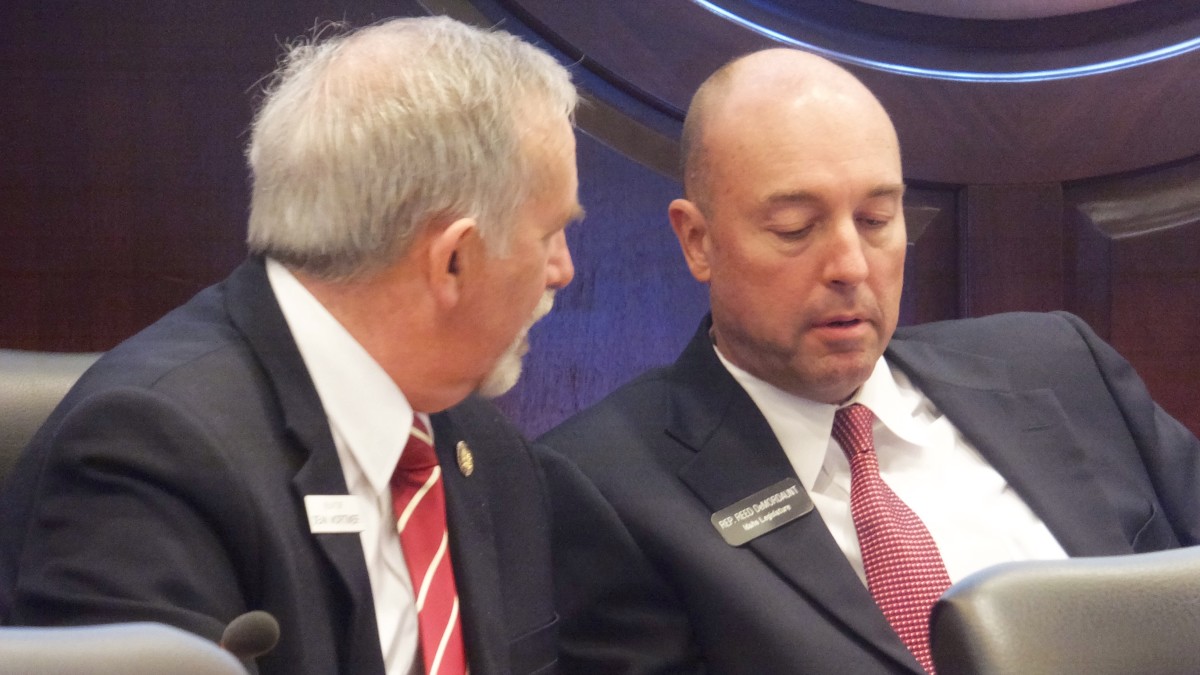(UPDATED, 2:19 p.m., with comment from the West Ada School District.)
A report tracking $16.7 million in teacher “leadership premiums” — compiled by the State Department of Education and presented to two legislative committees — is fraught with math errors.

The report came under some harsh scrutiny in the House Education Committee Thursday morning. A State Department of Education official acknowledged the errors in the report, but said it was impractical to doublecheck the schools’ math.
Leadership premiums are a form of salary bonuses the Legislature approved in 2014 to reward teachers and staffers who go above and beyond their normal job duties. The premiums are designed to reward teachers who mentor colleagues, assume hard-to-fill teaching jobs or perform other leadership roles. According to the 2014-15 report, schools awarded more than $16.7 million in leadership premiums to 10,369 Idaho teachers.
The report was unveiled a week ago. Since then, Idaho Education News has analyzed the data, and found a multitude of mathematical errors and omissions.
- In some cases, the report contains grossly inaccurate data about district staffing. For instance, Basin School District reports awarding 11 leadership premiums, to 3 percent of its teaching staff. That percentage suggests the small Idaho City-based staff — with 2014-15 enrollment of 365 — had a staff of more than 350 teachers.
- In nine cases, the report offers no data at all about district or charter leadership premiums. For example, the report says the American Falls School District received $92,277 for leadership premiums. However, the report provides no breakdown about how many premiums were awarded, and to how many teachers.
- The report lists the total amount of premiums awarded by a district or a charter, and the number of teachers who received a premium. That total, divided by the number of awards, should produce an average award. But in many cases, this math does not line up with the averages listed in the report.
- In numerous other cases, the report’s math simply doesn’t add up. The report is supposed to illustrate the maximum, minimum and average premiums awarded by a district or charter, but these columns are often inconsistent. For example, the West Jefferson School District reported an average premium of $847.55, a maximum of $1,007.48 and a minimum of $850. This is mathematically impossible — and not the only error of this type.
When asked to comment on the errors, State Department of Education spokesman Jeff Church issued a brief statement: “We will be looking into refining the calculation process, and possibly making calculations at the state level to allow for consistency across all school districts rather than placing the calculation responsibility at the local level.”
The State Department of Education first presented the numbers to the Senate Education Committee on March 3. The brief walk-through gave senators little time to dive into the data. Chairman Dean Mortimer cautioned senators not to jump to conclusions, but said the report should provide lawmakers with a great source of information.
On Thursday morning, House Education was less receptive.
Some of the committee’s questions focused on two aspects of the leadership premium program:
Across-the-board premiums. Some lawmakers weren’t pleased to see across-the-board premiums — when the program was designed to provide extra pay for teachers who take on added responsibilities. According to the report, 23 districts and charters awarded premiums to 100 percent of their staff. That list includes some of the state’s tiniest districts, with as little as one teacher. The list also includes West Ada, Idaho’s largest district, which awarded premiums to 1,335 teachers.
Rep. Ryan Kerby, R-New Plymouth, singled out West Ada, among other districts. And on Thursday afternoon, district spokesman Eric Exline said the state’s report isn’t accurate. West Ada, with an enrollment of roughly 37,000 students, actually employs about 2,200 teachers who are eligible for premiums.
Premium payouts. Lawmakers also were puzzled to see districts award premiums of less than $850, the minimum dollar figure specified in the law. According to the report, the smallest premium awarded was $59, at Inspire Virtual Charter School.
State Department of Education officials said the smaller awards went to part-time staff. Committee Chairman Reed DeMordaunt was unconvinced.
“To me the law was pretty clear, regardless whether you were part time or you were half time,” said DeMordaunt, R-Eagle. “The floor was $850.”
On Thursday, the SDE’s budget specialist acknowledged errors in the report. “We know the numbers are wrong, we know (the districts) did the percentage calculations incorrectly,” Tim Hill told Idaho Education News after the hearing.
Hill said it wasn’t practical to doublecheck the schools’ math. But he said he might have to.
“This got way more into the weeds than we thought it would.”
Idaho Education News reporter Clark Corbin contributed to this story.
